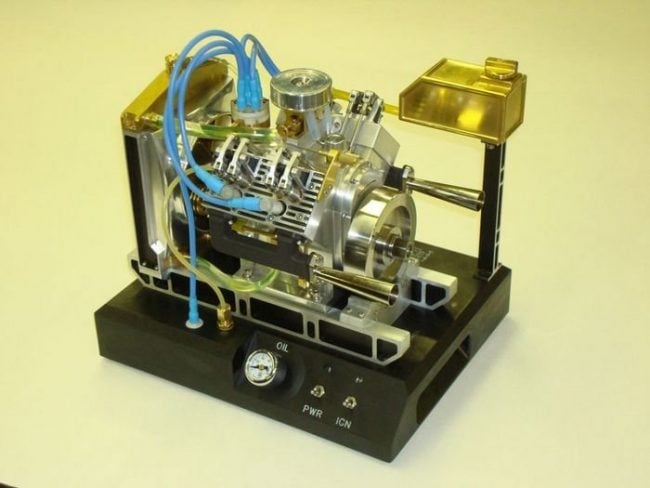After retiring in from a career as an electrical engineering, Terry Mayhugh of Round Rock, Texas set up shop in his backyard, “I took early retirement back in 2003 and built a shop in my backyard to do consulting work for a single customer that needed both electronic and mechanical design help. I purchased my Tormach 1100 PCNC mill, SolidWorks, and SprutCAM back in the summer of 2006 when some of my mechanical designs became too complicated to prototype on my manual equipment. Local machine shops had little interest in getting involved because nearly everything I was doing were one-offs, and I needed quick prototype turn arounds.”
Over time Mayhugh built up his CNC milling and CAD/CAM knowledge, starting with a Rudy Kouhopt radial engine. “I decided to build a 'fun' project with every operation done entirely in CAD/CAM on the PCNC, whether it made sense or not. I really enjoyed building the radial engine, and so I continued building models for fun. Later I built a working scaled replica of a 1917 Browning machine gun. The part of the CNC process that I most enjoy is figuring out how to make a particular part; that is, how to fixture the work piece and come up with an optimum sequence of steps for best results. So, I tend to select projects with designs that don't provide a lot of handholding.” Pushing his tools and talents to a new level, Mayhugh recently completed a Jerry Howell 4 cylinder twin cam 4-stroke engine - two years and approximately 3000 hours in the making. Following a group build of the same project at the Sherline Craftsmanship Museum, Mayhugh used the groups’ photos to help visualize his design. “Much of the engine was modeled in SolidWorks and I created over 200 SprutCAM programs to generate tool paths for my PCNC 1100 and my 9X20 CNC lathe,” he explained. Constructing the engine entirely from billet stock obtained at a local scrap yard, Mayhugh designed the intake and exhaust manifolds to look like cast iron. Using a cylinder bore measuring .875 inch and the piston stroke of .812 inch, the cylinder banks are not staggered and use knife and fork connecting rods. Additionally, the engine has a pressurized oiling system and a sealed cooling system driven by a magnetically coupled water pump. “My own skills were continually taxed especially with the V-4, but I learned a lot about machining and engine design along the way. I made (and re-made) my own piston rings and heat treated the cams and tappets in my own shop, Mayhugh said. “My biggest heartbreak during the project was starting over on the engine block after realizing I had made a fixturing error that ruined the first one after a few hundred hours into the project. My biggest satisfaction was laying the crank into the block and seeing it spin freely in its six bearings/carriers.” Having previously built the Howell V-Twin 4-Cycle Gas Engine, Mayhugh adds, “Jerry's IC engines are very stout, detailed, and well designed, but they aren't intended for the novice as there is a lot of close tolerance machining involved. Very little hand-holding is provided during either the construction or assembly phases. The way I built the engine, I was able to test everything as a sub-assembly as I built and assembled them (with the except of the carburetor, as I knew it could be a problem).The engine still needs some fine tuning and several hours of running to fully seat the rings but I'm anxious to start my next project which will be either a 9 cylinder radial or a live steam locomotive.” Plans for the building all of the Howell engines are available online at the J.E. Howell Model Engine Plans


